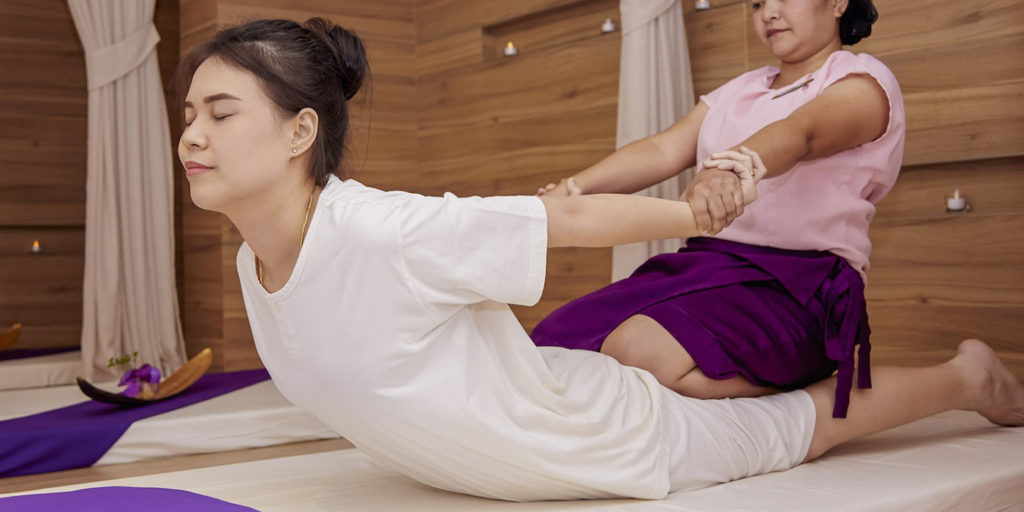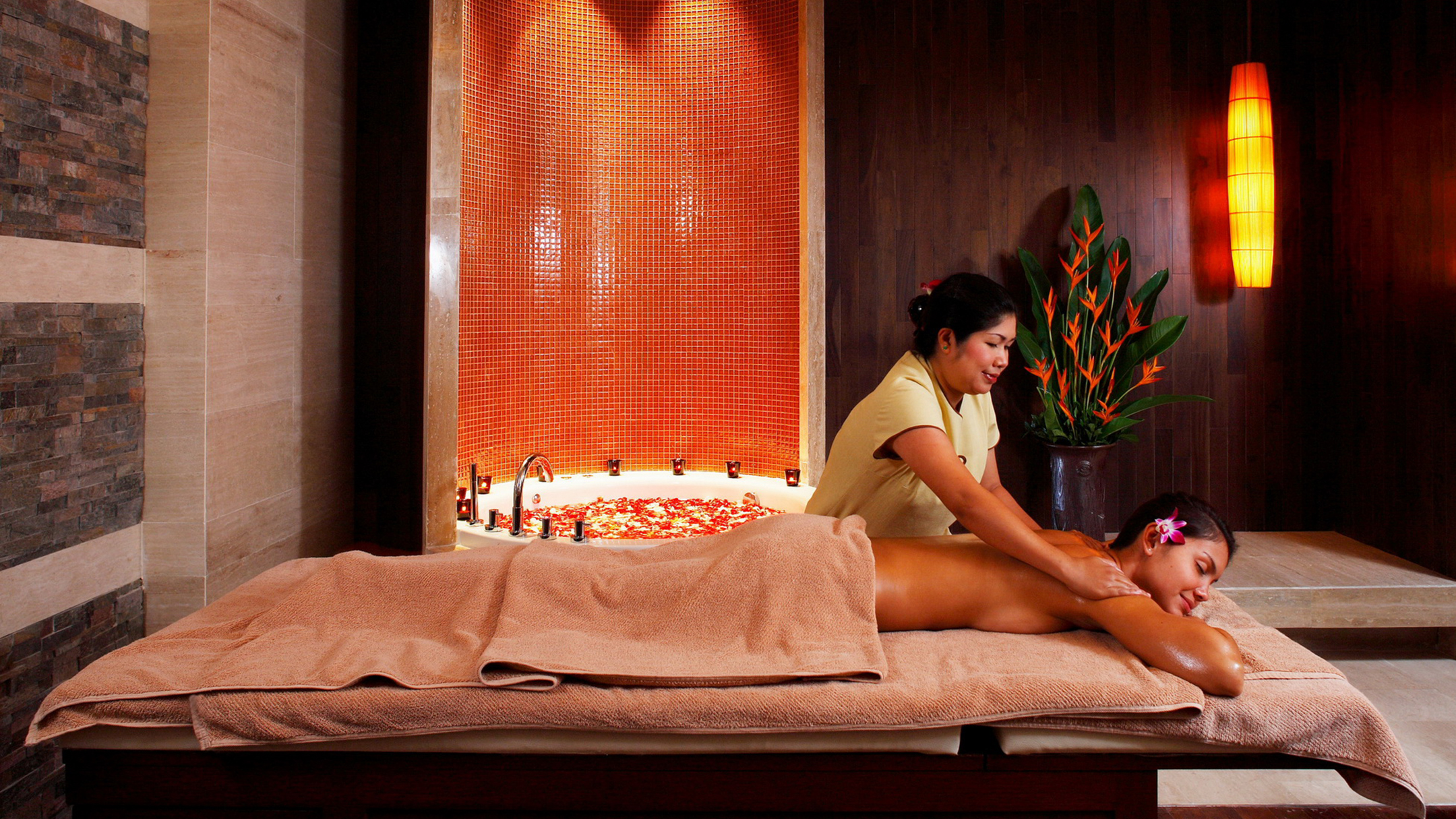Traditional Thai massage
Who has never heard of Traditional Thai Massage? Thai massages are well known not only in Asia, but also appreciated throughout the West. There is no woman in the world who, loving spas, does not want to try a wellness holiday, in the name of relaxing and therapeutic traditional Thai massages.
This ancient form of treatment was documented for the first time by a rich Frenchman, who in 1690 stayed at the Thai royal court in Ayuthaya bearing the following testimony: “[…] when in Siam someone gets sick, lets his whole body be manipulated and modeled by a person skilled in this bizarre art […] “. Unlike that practiced in the West, Thai massage is not aimed at simply relaxing the body, it is much more extensive, and affects the palms of the hands, fingers, elbows, forearms, knees and feet. And it is performed in specific points of the body through pressure, muscle stretching and warm compresses with medicinal herbs. These practices restore tone and well-being to the whole body! Through the pressure of the fingers the energetic channels are stimulated, which allow the reactivation of the anatomical-functional systems of the body, and the immune system is stimulated, producing relaxation and relieving pain. The goal is to restore physical harmony through the uniform redistribution of the body’s nervous energies.
The origin of Thai massage
The Thai massage, in Thai language “NUAL THAI PHAMBORAN”, presents a methodology that was originally practiced only in Buddhist times in the country. One of the most famous is the Wat Pho in Bangkok. Its origins seem to go back to ancient Indian culture and tradition holds that the most skilled masseurs were blind masters. The traditional Thai massage provides a series of other specific practices such as, for example: foot massage (a foot massage, which for Buddhist philosophy represents the center of balance of our whole body) or aromatic massage with coconut oil or other essences, etc.
It is also a moment of pure relaxation and pleasure, in which the body benefits from manipulations and becomes pleasant to fall asleep, perceiving how stress gradually leaves the body.
At massage school
A trip to Thailand is therefore an unmissable opportunity to enjoy all the benefits of traditional Thai massage, but why not, even to learn the main massage techniques in one of the most prestigious Thai schools in a professional way. We recommend two of them:
Wat Pho Traditional Massage School (tel. 022213686)
Buathip Thai Massage – Bangkok (tel. 022551045)

Chi non ha mai sentito parlare del Massaggio Tradizionale Thailandese ? I massaggi thailandesi sono ben conosciuti non solo in Asia, ma anche apprezzati in tutto l’Occidente. Non c’è donna al mondo che, amando i centri termali, non desideri provare una vacanza benessere, all’insegna dei rilassanti e terapeutici massaggi Thai tradizionali.
Questa antica forma di cura è stata documentata per la prima volta da un ricco Francese, che nel 1690 soggiornò presso la corte reale thailandese ad Ayuthaya riportando la seguente testimonianza: “[…] quando nel Siam qualcuno si ammala, lascia che tutto il suo corpo venga manipolato e modellato da una persona esperta in questa bizzarra arte[…]”. A differenza di quello praticato in Occidente, il massaggio Thai non è finalizzato al semplice rilassamento del corpo, è molto più esteso, e interessa i palmi delle mani, le dita, i gomiti, gli avambracci, le ginocchia e i piedi. E viene eseguito in specifici punti del corpo attravers pressioni, allungamenti muscolari e impacchi caldi con erbe medicinali. Queste pratiche ridonano tonicità e benessere a tutto il corpo! Tramite la pressione delle dita vengono stimolati i canali energetici, che consento la riattivazione dei sistemi anatomo-funzionali del corpo, e viene sollecitano il sistema immunitario, producendo rilassamento e alleviando i dolori. L’obiettivo è quello di ristabilire l’armonia fisica attraverso la ridistribuzione uniforme delle energie nervose dell’organismo.
L’origine del massaggio Thai
Il massaggio thailandese, in lingua Thai “NUAL THAI PHAMBORAN”, presenta una metodologia che originariamente veniva praticata solo nei tempi Buddhisti del Paese. Uno dei più famosi è il Wat Pho di Bangkok. Le sue origini sembrano risalire all’antica cultura indiana e la tradizione sostiene che i massaggiatori più abili fossero i maestri non vedenti. Il massaggio tradizionale thailandese prevede una serie di altre pratiche specifiche come, ad esempio: il foot massage (il massaggio ai piedi, che per la filosofia buddista rappresenta il centro di equilibrio di tutto il nostro corpo) o il massaggio aromatico con olio di cocco o altre essenze, ecc.
Si tratta, inoltre, di un momento di puro relax e piacere, in cui il corpo trae giovamento dalle manipolazioni e diventa piacevole addormentarsi, percependo come lo stress abbandoni gradualmente il corpo.
A scuola di massaggi
Un viaggio in Thailandia è quindi un’imperdibile occasione per godere tutti i benefici del massaggi tradizionali Thai, ma, perché no?, anche per apprendere in modo professionale le principali tecniche di massaggio in una delle più prestigiose scuole thailandesi. Ve ne segnaliamo due:
Wat Pho Traditional Massage School ( tel. 022213686 )

